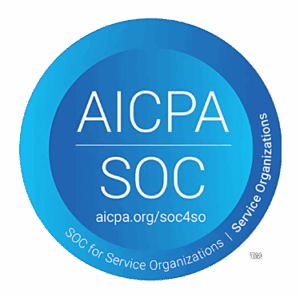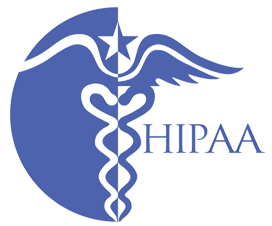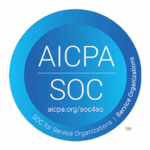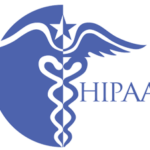
As technology becomes an integral part to any healthcare organization, understanding how it can work for your medical coding is necessary to not only survive, but thrive.
Hospital revenue cycle management teams face unprecedented challenges—medical coding errors that drain budgets, missed revenue opportunities, and regulatory changes that shift monthly. As healthcare policy discussions intensify around transparency and billing practices, precision in revenue cycle management isn’t just a nice-to-have—it’s essential for survival.
The goal remains unchanged: faster, more accurate medical coding that maximizes reimbursement. But the path to get there is transforming rapidly, driven by breakthrough technologies that are finally mature enough to deliver on their promises in healthcare revenue cycle operations.
Here are three transformational shifts in medical coding services and what healthcare organizations are implementing right now to stay competitive.
AI-Powered Medical Coding that Understands Clinical Context (Not Just Keywords)
We’ve moved beyond the AI hype into actual implementation of intelligent medical coding solutions. What’s happening in hospital coding departments today isn’t just automation—it’s intelligent pattern recognition that mirrors how experienced medical coders process information.
About 46% of hospitals and health systems use AI in their revenue cycle management operations, with adoption accelerating as results become indisputable (Healthcare Finance News, 2025). The breakthrough isn’t replacing human judgment in medical coding—it’s augmenting their work with tools that truly comprehend clinical documentation.
What today’s advanced AI medical coding tools do:
- Parse complex clinical narratives to identify missed diagnoses or undercoded accounts
- Flag DRG optimization opportunities in real-time while medical coders are actively working
- Reduce quality assurance time by 40% without compromising coding accuracy across medical specialties (AllZone Medical Services, 2025)
This shift allows your medical coding team to focus on high-value decision-making and complex accounts, while AI handles the pattern recognition tasks that consume so much time but don’t require human expertise in clinical documentation.
Manual Audits Are Out. Intelligent Audits Are In.
Organizations who still randomly sample charts in spreadsheets and hoping to catch major coding issues are already behind in revenue cycle management. Manual audit processes in medical coding aren’t just inefficient—they’re a liability in today’s data-driven healthcare environment.
Medical coding audit systems utilizing technology deliver:
- Thousands of built-in clinical and coding rules that automatically flag high-risk accounts
- Real-time performance dashboards showing exactly how each medical coder, service line, and DRG is performing
- AI-generated clinical documentation queries ready to send to physicians, eliminating the usual back-and-forth delays in revenue cycle workflows
With 74% of hospitals implementing some form of automation in healthcare operations (The Healthcare Technology Report, 2025), intelligent medical coding auditing has moved from innovation to industry standard. Organizations still relying on manual coding processes are operating at a significant competitive disadvantage in revenue cycle management.
Revenue Cycle Data Integration that Drives Healthcare Revenue
You’ve optimized your medical coders and modernized your coding audits. If clinical data is still trapped in silos, you’re missing the biggest opportunity in revenue cycle management—and potentially exposing yourself to unnecessary scrutiny in today’s transparency-focused healthcare landscape.
Smart revenue cycle management platforms now extract and process clinical data in near real-time, enabling:
- Automatic routing of complex medical coding accounts to your most experienced coders
- Performance tracking that matters: throughput, accuracy, and revenue impact per coder and department
- Elimination of the lag between patient discharge and reimbursement planning (DNFB)
- Fully auditable documentation and coding decisions, creating clear trails for any billing inquiries
This integration doesn’t just improve medical coding efficiency—it creates the operational transparency that’s becoming essential as healthcare costs face increased scrutiny.
How Rapidcare is Disrupting the Medical Coding Transformation
Rapidcare is leveraging AI to disrupt traditional medical coding workflows with their comprehensive RCM Coding Companion services—a modular platform that lets hospitals implement exactly what their coding teams need, without the bloated pricing and long-term commitments of legacy Computer Assisted Coding (CAC) systems.
With over 25 years in health information management and clinical documentation, Rapidcare understands the daily operational healthcare challenges. Our approach goes beyond better medical coding—it’s about creating smarter, faster revenue cycle management operations from patient admission to final payment.
Let us help your organization thrive, contact Rapidcare to see what solution best fits your organization.
The Strategic Action Plan for Revenue Cycle Management for 2025
Medical coding has evolved from a back-office function into a strategic driver of hospital financial performance. With intensified focus on billing transparency and healthcare costs, getting revenue cycle management right isn’t just about revenue optimization—it’s about operational integrity and regulatory compliance.
Here’s what healthcare leaders should prioritize:
- Start with your highest-volume service lines. Implement AI-powered medical coding tools and track measurable improvements in coding speed, accuracy, and DRG optimization. This focused approach lets you demonstrate ROI in revenue cycle management before expanding.
- Automate your medical coding audit workflow. Replace reactive chart reviews with proactive, real-time insights to identify coding issues before they become costly problems in your revenue cycle.
- Upgrade your revenue cycle data integration infrastructure. Eliminate the lag between patient discharge and revenue planning by connecting clinical and medical coding systems. In an era where billing transparency faces increased scrutiny, complete and accurate documentation workflows aren’t just efficient—it’s essential for regulatory compliance.
- Invest in continuous medical coding training. Deploy AI-powered tools that automatically surface coding updates, regulatory changes, and audit priorities to keep your team current without consuming valuable time.
According to the American Hospital Association (2024), AI streamlines clinical documentation and processes by reducing redundant tasks, which helps lower denial rates and boost patient satisfaction—naturally driving productivity gains in revenue cycle management. More importantly, it creates the comprehensive documentation and billing accuracy that withstands increased regulatory oversight.
The revenue cycle opportunity is substantial: potential savings of $9.8 billion through AI-powered revenue cycle automation (IngeniousMed, 2025), while 9% of all claims are currently rejected in error (Towards Healthcare, 2025). Healthcare organizations that act now position themselves to capture this value while competitors struggle with legacy medical coding processes.
Ready to Quantify Your Revenue Cycle Opportunity?
Contact Rapidcare today to discover how our proven medical coding services, clinical documentation expertise, and revenue cycle management solutions can transform your healthcare organization’s financial performance.
Resources
- IngeniousMed. (2025). “Next-Gen RCM Expectations for 2025: AI Driving Double-Digit Revenue Growth.”
- AllZone Medical Services. (2025). “AI in Medical Coding: Tools, Trends & Transformation.”
- American Hospital Association. (2024). “3 Ways AI Can Improve Revenue-Cycle Management.”
- Towards Healthcare. (2025). “AI in Medical Coding Market Size Surges USD 9.16 Bn by 2034.”
- The Healthcare Technology Report. (2025). “The Top 25 Healthcare AI Companies of 2025.”
- Healthcare Finance News. (2025). “Trends 2025: AI in healthcare progressing despite reimbursement hurdles.”
The Rapid Care team is here to help
Our dedicated team is committed to providing prompt and personalized assistance to ensure your questions are answered and issues are resolved quickly and efficiently.



The Rapid Care team is here to help
Our dedicated team is committed to providing prompt and personalized assistance to ensure your questions are answered and issues are resolved quickly and efficiently.




